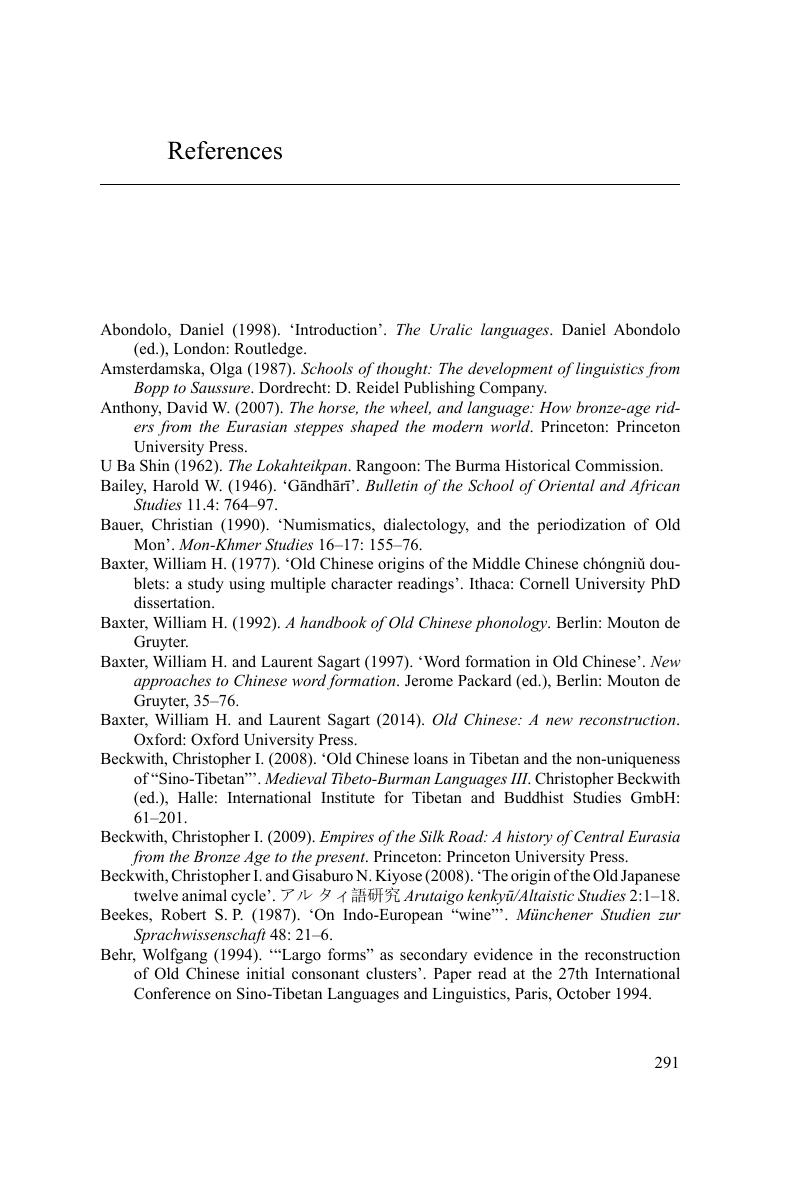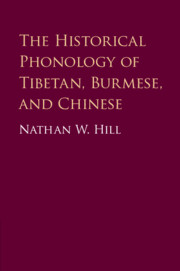Book contents
- The Historical Phonology of Tibetan, Burmese, and Chinese
- The Historical Phonology of Tibetan, Burmese, and Chinese
- Copyright page
- Dedication
- Epigraph
- Contents
- Figures
- Note on Abbreviations and Conventions
- Book part
- Introduction
- 1 Tibetan
- 2 Burmese
- 3 Chinese
- 4 Trans-Himalayan
- Appendix: Complete Lists of Examples
- References
- Index Verborum
- Index Rerum et Nomum
- Index Legum
- References
References
Published online by Cambridge University Press: 22 July 2019
- The Historical Phonology of Tibetan, Burmese, and Chinese
- The Historical Phonology of Tibetan, Burmese, and Chinese
- Copyright page
- Dedication
- Epigraph
- Contents
- Figures
- Note on Abbreviations and Conventions
- Book part
- Introduction
- 1 Tibetan
- 2 Burmese
- 3 Chinese
- 4 Trans-Himalayan
- Appendix: Complete Lists of Examples
- References
- Index Verborum
- Index Rerum et Nomum
- Index Legum
- References
Summary

- Type
- Chapter
- Information
- The Historical Phonology of Tibetan, Burmese, and Chinese , pp. 291 - 309Publisher: Cambridge University PressPrint publication year: 2019



